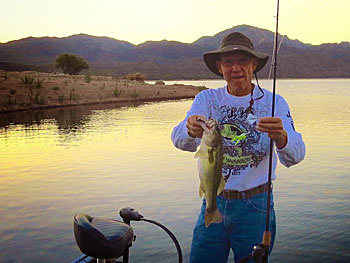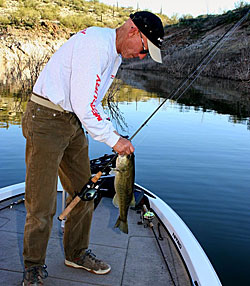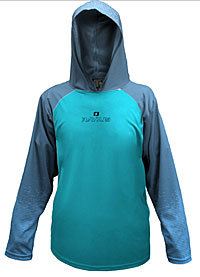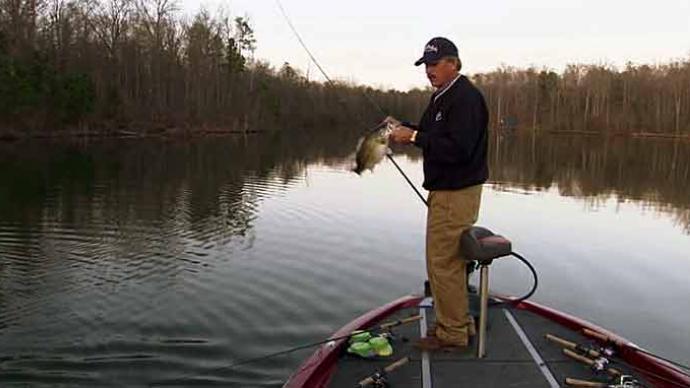
The sun is the source of all life and energy on the earth: ignore this powerhouse at your own risk. Too much sun can cause anything from freckles and wrinkles to blindness, cancer, and even death. How much is too much? Well, there’s the big question. Fair-skinned people are in greater danger from shorter exposure times, but everyone needs protection.
You no longer have to worry about rickets from not getting enough sun – you can get your vitamin D from many other sources, so there isn’t a good reason to expose your skin to the sun. Ultraviolet radiation from the sun is the number one cause of skin cancer. According to the Skin Cancer Foundation, “Nearly 5 million people in the U.S. are treated for skin cancer every year, and an estimated 10,000 people will die of melanoma every year.” (skincancer.org)
Fishermen are particularly susceptible to sun damage because we get a double whammy: direct sun from above plus reflected sun from the water. Add that to the fact that we spend countless hours standing on boats during full sun many days per week, and you’ve got a recipe for disaster. The good news is that there are many ways to protect yourself from the sun.
Sunscreen lotions are probably the least effective method for protection, but they are better than nothing. Most people don’t apply enough to begin with and don’t reapply after sweating or swimming. Staying in the shade helps, but even if you use an umbrella on the boat, you are exposed to light reflected from the water. Sun doesn’t just hurt your skin, either – it can also damage your eyes. Sunscreen lotions do nothing for the eyes.

Luckily, clothing can be our first line of defense against the sun. Even a basic t-shirt has minimal UV protection until it gets wet. But loosely woven, light-colored clothing offers little protection, which is a bummer because that’s the kind of clothing you’d like to wear in the summer when the sun feels the hottest against your skin. But don’t be fooled by how the sun feels because even on cloudy days, UV rays go right through the clouds and hit your skin.
Your best bet is to get clothing with extra UV protection. The old ways of adding UV protection made the fabric almost solid, so wearing a protective shirt felt like a plastic bag. But advances in technology have made moisture-wicking fabric plus UV protection available, which means you can buy a shirt that feels good, looks good, and protects you from harmful rays. Many companies make UV protection clothing. If you’re a fisherman and spend your whole day on the water, the higher the UV number, the better – don’t bother if the SPF is under 30. Shop around, and you may be surprised at how many great-looking, comfortable fishing shirts are out there that will protect you from the sun.
Do you say your fishing jersey has built-in SPF (Sun Protection Factor) but has short sleeves? Wear a long-sleeved shirt under it, then next time you order jerseys, get long sleeves. You should wear sunscreen lotion on the exposed portions of your skin, starting an inch or so inside the clothing. Necks are particularly vulnerable, especially if you wear traditional fishing caps. Those do nothing to protect your ears and neck.
A lot of pro fishermen are wearing gaiters these days. Gaiters are designed to cover various parts of your body that your regular shirt and hat may leave exposed: hands, neck, the lower part of your face, etc. These are also available in fabrics that wick away moisture to keep you comfortable. Hand gaiters are great for guys who won’t put sunscreen on their hands for fear of getting in on the baits and turning the fish off. Neck/face gaiters can be pulled up to cover the entire lower portion of the face, including the nose and lips. With a great pair of UV protection sunglasses and a wide-brimmed hat, these provide excellent coverage, even from sunlight reflected off the water.
If you won’t wear gaiters, then at the very least get a broad-brimmed hat or one of those salt-water hats with fabric that covers your neck, and wear sunscreen on your face. Don’t forget to reapply several times per day. SPF-rated sunglasses are an absolute must, and they have the added benefit of letting you see into the water much better. Shop around for the glasses with the highest amount of protection. They are also available with prescription lenses, so you have no excuse.

Another option is a sun hoodie. Although these don’t have the option of adding logos, they are lightweight, moisture-wicking, and have an SPF of 50. The hood protects your neck, ears, and the sides of your face. These are all made from breathable soft knit polyester, wicks away moisture, and resist wrinkles. Great stuff, and even if you’re not KVD and you don’t need logos all over your jersey, you can still order anything you want without logos.
Other options include traditional woven fabric shirts from companies like Columbia and Solumbra. These shirts tend to stand away from the skin, which allows more air to circulate. Many are vented in the back and under the arms to keep you cooler. If you visit any outdoor store, you will find many different styles and brands. Shop around until you find some that fit right and let you move like you need to, and be sure that the hang tag specifically states an SPF or UV protection factor.
Technology keeps advancing, so many companies have clothing whose SPF properties last the garment's lifetime. Here’s the deal: read the label and follow the laundering instructions. That’s crucial. Also, there are products available that you can add to your clothing to give you some protection, but those are usually temporary.
Here in Arizona, coolness is a must, so we love cotton, but cotton alone provides very little protection. However, finding clothing that will protect you and keep you cool isn't tough. The sun may be fierce here, but it’s just as dangerous where you are. Cover up and live.




